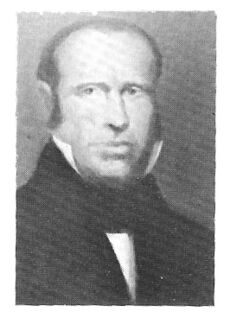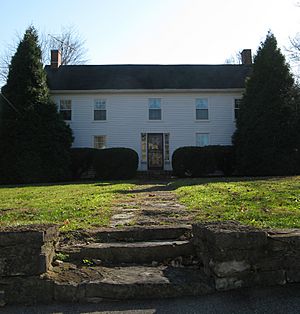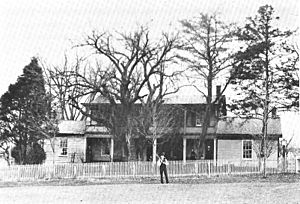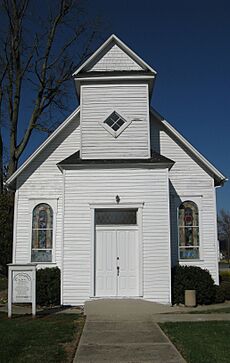Hanover, Indiana facts for kids
Quick facts for kids
Hanover, Indiana
|
|
|---|---|
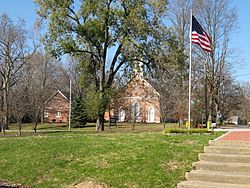
The Hanover Presbyterian Church, as viewed from Fireman's Park.
|
|
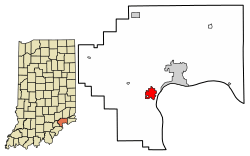
Location of Hanover in Jefferson County, Indiana.
|
|
| Country | United States |
| State | Indiana |
| County | Jefferson |
| Township | Hanover |
| Area | |
| • Total | 2.23 sq mi (5.77 km2) |
| • Land | 2.22 sq mi (5.75 km2) |
| • Water | 0.00 sq mi (0.01 km2) |
| Elevation | 778 ft (237 m) |
| Population
(2020)
|
|
| • Total | 3,743 |
| • Density | 1,685.28/sq mi (650.55/km2) |
| Time zone | UTC-5 (EST) |
| • Summer (DST) | UTC-4 (EDT) |
| ZIP code |
47243
|
| Area code(s) | 812 |
| FIPS code | 18-31216 |
| GNIS feature ID | 2396984 |
Hanover is a town in Hanover Township, Jefferson County, Indiana, United States. It is located along the Ohio River. In 2020, the town had a population of 3,743 people. Hanover is home to Hanover College, which is a small college with a focus on arts and sciences. The tallest waterfall in Indiana, called Fremont Falls, can also be found in Hanover.
Contents
History of Hanover
Early Explorers and Settlers
In the late 1700s, the area that is now Indiana was part of the Northwest Territory of the United States. This large region was west of the Appalachian Mountains and north of the Ohio River. Few European settlements existed on the northern side of the Ohio River back then. Kentucky, on the southern side, became a state in 1792. Before Europeans settled the Hanover area, the Shawnee people lived there.
In 1801, a young farmer named George Logan from Kentucky traveled down the Ohio River. He was taking his farm goods to sell in New Orleans. He noticed there were no European settlements between Carrollton, Kentucky and Louisville. The riverbanks were covered in thick forests. He saw Native American hunters and fishermen, along with many buffalo and deer.
Because of bad weather, Logan stopped his journey in late February. He pulled his boat ashore near what is now Hanover Beach. After a few days, he went exploring. He climbed a hill to a spot now known as Logan's Point. This was the first time a European was recorded exploring the Hanover area. Logan loved the view so much that he decided he wanted to live there someday. He carved his initials and the date, March 1, 1801, into a beech tree. He did not return to settle for 14 years.
Dunn's Settlement Becomes Hanover
Judge Williamson Dunn from Kentucky bought the land where Hanover is today in 1808. The next year, Dunn moved his family there. The area became known as "Dunn's Settlement." Many settlers followed, most of them Scots-Irish Presbyterians. These were immigrants and their children who had moved from northern Ireland to Virginia, then to Kentucky, and finally to the Hanover area.
One of these settlers was Christopher Harrison. He later became Indiana's first lieutenant governor. He also helped plan the state capital of Indianapolis. Harrison built a home at Logan's Point. When George Logan returned in 1815, the two men met. Logan bought the land and settled permanently in Hanover. Harrison then moved to Salem, Indiana. The next year, he was elected lieutenant governor.
Even though many early residents were Presbyterian, the closest church was 25 miles away in Charlestown. In 1819, a Presbyterian minister named Thomas C. Searle moved to nearby Madison. He traveled around to serve Presbyterian communities. He soon realized that many Scots-Irish Presbyterians lived in Dunn's Settlement.
On March 4, 1820, Searle started the Hanover Presbyterian Church. His wife was from Hanover, New Hampshire. The church members admired her greatly, so they named the church in her honor. Soon after, the town also adopted the name "Hanover." At first, it was called "South Hanover" because another town in Indiana already had a post office named Hanover. Later, when the other Hanover no longer had a post office, South Hanover's name was shortened to just Hanover.
After the church was founded, the community worked to build a church building. Williamson Dunn gave land and money for this project.
Hanover College is Founded
John Finley Crowe grew up in a Presbyterian family. He studied to become a minister at Transylvania College and Princeton Theological Seminary. After finishing his studies in 1815, Crowe became a minister in Kentucky. He believed in ending slavery and even started a Sunday school for African-American children. He also published a magazine that supported ending slavery. His views made some of his neighbors in Kentucky unhappy.
In 1823, Crowe was invited to serve at the Hanover Presbyterian Church. He was happy to move to Indiana, which was a free state (meaning slavery was not allowed). Soon after arriving, Crowe began building his house. This house, called the Crowe-Garritt House, still stands today. It is located near the Hanover Presbyterian Church and was added to the National Register of Historic Places in 1980.
After joining the church, Crowe encouraged members to help start a school for religious studies. This school opened in Hanover on January 1, 1827. Classes first met in the Presbyterian Church's stone building. But within a year, the school needed more space. Williamson Dunn donated land for a new college building. In 1829, the state of Indiana officially allowed the school to become Hanover Academy, which was like a high school with a focus on classic subjects.
The school grew quickly. In 1833, it received a new charter from the state of Indiana to become a four-year college called Hanover College. The part of the school focused on religious studies later moved to other cities.
Religion in Hanover
Even though Presbyterians founded Hanover, people of other faiths soon moved to the area. In the early 1800s, Baptists and Methodists were more common than Presbyterians in many parts of the United States. The Hanover Methodist Church was founded in 1846, and the Hanover Baptist Church followed soon after. The First Christian Church (Disciples of Christ) was started in 1974.
St. Stephen's African Methodist Episcopal Church is a very important church. It belongs to the first independent Black Christian group founded in the United States. This church was added to the National Register of Historic Places in 2000.
Geography and Climate
Hanover covers about 2.31 square miles (5.77 square kilometers) of land.
Hanover's Climate
The weather in Hanover has hot, humid summers. Winters are usually mild to cool. According to the Köppen Climate Classification system, Hanover has a humid subtropical climate. This means it has warm temperatures and plenty of rain throughout the year.
Population Information
| Historical population | |||
|---|---|---|---|
| Census | Pop. | %± | |
| 1870 | 564 | — | |
| 1880 | 376 | −33.3% | |
| 1890 | 459 | 22.1% | |
| 1900 | 377 | −17.9% | |
| 1910 | 356 | −5.6% | |
| 1920 | 360 | 1.1% | |
| 1930 | 390 | 8.3% | |
| 1940 | 406 | 4.1% | |
| 1950 | 1,060 | 161.1% | |
| 1960 | 1,170 | 10.4% | |
| 1970 | 3,018 | 157.9% | |
| 1980 | 4,054 | 34.3% | |
| 1990 | 3,610 | −11.0% | |
| 2000 | 2,834 | −21.5% | |
| 2010 | 3,546 | 25.1% | |
| 2020 | 3,743 | 5.6% | |
| U.S. Decennial Census | |||
In 2010, there were 3,546 people living in Hanover. About 95% of the people were White, and 2.3% were African American. People of Hispanic or Latino background made up 2.4% of the population.
The average age of people in Hanover was 26.2 years old. About 18.6% of residents were under 18 years old. Many young adults live in Hanover because of the college.
Education in Hanover
Southwestern High School is the public high school that serves Hanover.
Hanover also has a public library. It is a branch of the Jefferson County Public Library, where you can find books and other resources.
Images for kids
See also
 In Spanish: Hanover (Indiana) para niños
In Spanish: Hanover (Indiana) para niños



